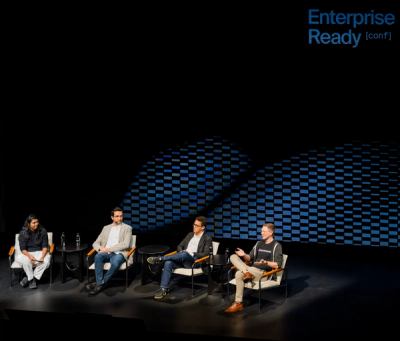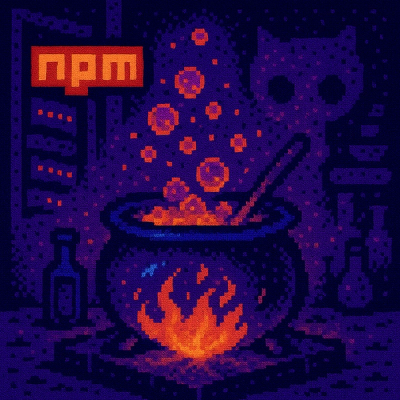
Research
/Security News
9 Malicious NuGet Packages Deliver Time-Delayed Destructive Payloads
Socket researchers discovered nine malicious NuGet packages that use time-delayed payloads to crash applications and corrupt industrial control systems.
@100mslive/react-native-video-plugin
Advanced tools
HMSSDK now provides support for Virtual Background using @100mslive/react-native-video-plugin. It allows users to change their background during a call. Users can choose from a variety of backgrounds or upload their own custom background. It also provides
Integrate virtual backgrounds, blur backgrounds effects in your React Native app with the 100ms Video Plugin. 100ms video plugin enabled adding virtual backgrounds, blur backgrounds, and other video filters to your 100ms video conferencing app. The plugin is built on top of the 100ms React Native SDK.
📖 Read the Complete Documentation here: https://www.100ms.live/docs/react-native/v2/quickstart/quickstart
📲 Download the Example iOS app here: https://testflight.apple.com/join/v4bSIPad
🤖 Download the Example Android app here: https://appdistribution.firebase.dev/i/7b7ab3b30e627c35
Virtual Background plugin helps in customising one's background that replacing the background with a static image or blurring the background. This guide provides an overview of usage of the Virtual Background plugin of 100ms.
| Package | Version |
|---|---|
| @100mslive/react-native-room-kit |  |
| @100mslive/react-native-hms |  |
| @100mslive/react-native-video-plugin |  |
@100mslive/react-native-hms SDK version is ^1.10.6iOS 15Install @100mslive/react-native-video-plugin library
npm install @100mslive/react-native-video-plugin
// Import from `@100mslive/react-native-video-plugin` library
import { HMSVirtualBackgroundPlugin } from '@100mslive/react-native-video-plugin';
...
const virtualBackgroundPlugin = new HMSVirtualBackgroundPlugin();
let videoSettings = new HMSVideoTrackSettings({
initialState: HMSTrackSettingsInitState.MUTED
// The virtual background plugin to use for the video track. @type {HMSVirtualBackgroundPlugin}
videoPlugin: virtualBackgroundPlugin,
});
let trackSettings = new HMSTrackSettings({
video: videoSettings,
});
const hmsInstance = await HMSSDK.build({
trackSettings,
});
Hold on to a reference to the instance of HMSVirtualBackgroundPlugin and use enable and disable methods on it to enable/disable the virtual background.
const virtualBackgroundPlugin = new HMSVirtualBackgroundPlugin();
...
let isVBEnabled = false;
// Enable VB
await virtualBackgroundPlugin.enable();
isVBEnabled = true;
// Disable VB
await virtualBackgroundPlugin.disable();
isVBEnabled = false;
Always call
enablemethod afterON_JOINandON_PREVIEWevent
Enabling Virtual Background and applying effect can take some time, you should add a loader in UI.
Enable the blur background using the setBlur method. You should pass blur percentage ranging from 0-100
const virtualBackgroundPlugin = new HMSVirtualBackgroundPlugin();
...
// state for tracking if VB is enabled
let isVBEnabled = false;
// If VB is disabled, first enable it before calling `setBlur` method
if (isVBEnabled === false) {
await virtualBackgroundPlugin.enable();
isVBEnabled = true;
}
await virtualBackgroundPlugin.setBlur(100);
You should only call
setBlurmethod only after enabling the virtual background
Enable the background image using the setBackground method. It accepts image source (either a object with height, width and uri properties or a static image file).
Here is how to use a static image file -
const virtualBackgroundPlugin = new HMSVirtualBackgroundPlugin();
...
// state for tracking if VB is enabled
let isVBEnabled = false;
// If VB is disabled, first enable it before calling `setBlur` method
if (isVBEnabled === false) {
await virtualBackgroundPlugin.enable();
isVBEnabled = true;
}
const image = require('<PATH_TO_IMAGE_HERE>'); // ex: require('../assets/VB-1.jpg')
await virtualBackgroundPlugin.setBackground(image);
Here is how to use remote image file, setBackground method accepts object of following type -
export interface ImageURISource {
width: number;
height: number;
/**
* `uri` is a string representing the resource identifier for the image, which
* could be an http address, a local file path, or the name of a static image
* resource (which should be wrapped in the `require('./path/to/image.png')`
* function).
*/
uri:
}
...
await virtualBackgroundPlugin.setBackground({
width,
height,
uri: 'file://...', // path of image stored in device
});
Using library like react-native-image-picker -
import { launchImageLibrary } from 'react-native-image-picker';
...
// You can use result from library like `react-native-image-picker` to use images from photo library
const result = await launchImageLibrary({ mediaType: 'photo', selectionLimit: 1 });
// getting first image
const imageObject = response.assets?.[0];
// If image is selected, use it as background
if (imageObject) {
await virtualBackgroundPlugin.setBackground(imageObject);
}
You should only call
setBackgroundmethod only after enabling the virtual background
FAQs
HMSSDK now provides support for Virtual Background using @100mslive/react-native-video-plugin. It allows users to change their background during a call. Users can choose from a variety of backgrounds or upload their own custom background. It also provides
The npm package @100mslive/react-native-video-plugin receives a total of 30 weekly downloads. As such, @100mslive/react-native-video-plugin popularity was classified as not popular.
We found that @100mslive/react-native-video-plugin demonstrated a healthy version release cadence and project activity because the last version was released less than a year ago. It has 17 open source maintainers collaborating on the project.
Did you know?

Socket for GitHub automatically highlights issues in each pull request and monitors the health of all your open source dependencies. Discover the contents of your packages and block harmful activity before you install or update your dependencies.

Research
/Security News
Socket researchers discovered nine malicious NuGet packages that use time-delayed payloads to crash applications and corrupt industrial control systems.

Security News
Socket CTO Ahmad Nassri discusses why supply chain attacks now target developer machines and what AI means for the future of enterprise security.

Security News
Learn the essential steps every developer should take to stay secure on npm and reduce exposure to supply chain attacks.